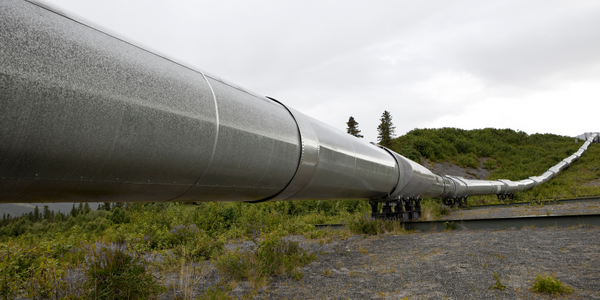Largest Energy Company in the Southern Hemisphere experiences cloud economics with enterprise-class performance from SimpliVity’s hyperconverged solution
---nyse--hpe_1.jpg)
Customer Company Size
Large Corporate
Region
- America
Country
- United States
Product
- OmniCube CN-2000
- SimpliVity OmniCube
- Data Virtualization Platform (DVP)
Tech Stack
- Microsoft SQL Server
- Windows Remote Desktop
- VMware VMs
Implementation Scale
- Enterprise-wide Deployment
Impact Metrics
- Cost Savings
- Productivity Improvements
- Customer Satisfaction
Technology Category
- Infrastructure as a Service (IaaS) - Cloud Computing
Applicable Industries
- Oil & Gas
- Renewable Energy
Applicable Functions
- Discrete Manufacturing
- Maintenance
Services
- Cloud Planning, Design & Implementation Services
- System Integration
About The Customer
The customer is the fourth largest Oil and Gas Company in the world, as well as an integrated energy company with a presence in 29 countries. They are involved in oil and renewable energy acquisition and have locations globally. The company uses a variety of applications, including Microsoft SQL Server, Windows Remote Desktop, and mission-critical applications to monitor buoys and wave patterns, as well as other client-server and third-party applications. The company operates on ships located 200 miles off-shore and has a central data center in Texas. The company was facing challenges with their legacy infrastructure, which was taking up too much space, consuming too much power, and not providing an efficient solution for off-site backups. They were seeking a technology refresh and a solution that could deliver best-in-class disaster recovery capabilities.
The Challenge
The fourth largest Oil and Gas Company in the world as well as integrated energy company with a presence in 29 countries was faced with a major problem: their legacy infrastructure could no longer service all their mission-critical applications. Applications such as Microsoft SQL server, Remote Desktop servers, applications to monitor buoys and wave patterns, and other third-party applications were not running in an optimized or secure state. For disaster recovery, the company used tape backup which was extremely slow and provided no solution for off-site backups for their ships, 200 miles off-shore. Also the existing infrastructure was taking up too much space in the limited room onboard the ships. This Oil and Gas Company sought a technology refresh and a solution that could deliver best-in-class DR capabilities. The Oil and Gas Company had been using six HP servers, NetApp storage, and VSAT connectivity to host ten VMware VMs. The infrastructure was consuming two full racks on the resource-constrained Floating, Production, Storage, and Offloading (FPSO) ship where power, space, and cooling were premiums. This design had been in place for six years. Not only was the rigid, legacy infrastructure inefficient, the architecture also lacked the capabilities and agility needed to support new application requirements their business demanded.
The Solution
The Oil and Gas Company discovered SimpliVity's OmniCube solution at VMworld 2013. They found that SimpliVity's Data Virtualization Platform (DVP) was the solution to their disaster recovery and critical infrastructure needs. The company purchased 3 CN-2000s, two of which were placed on the ship, and one was stationed at the central data center in Texas. The installation and onboarding were completed within a couple of hours, with all ten VMs on the ship non-disruptively moved over to the OmniCubes. Their two full racks were reduced to one, reducing their power and cooling costs. With this unique setup, the Oil and Gas Company effectively leveraged the OmniCube systems to decrease space, complexity, and cost while increasing productivity and efficiency. The OmniCube’s ability to deduplicate, compress, and optimize data has eased the Oil and Gas Company’s data center workloads. The unique capability is foundational to enhancing backup and off-site data protection—a pressing concern for a remote oil refinery with limited access to IT support.
Operational Impact
Quantitative Benefit

Case Study missing?
Start adding your own!
Register with your work email and create a new case study profile for your business.
Related Case Studies.

Case Study
Remote Monitoring & Predictive Maintenance App for a Solar Energy System
The maintenance & tracking of various modules was an overhead for the customer due to the huge labor costs involved. Being an advanced solar solutions provider, they wanted to ensure early detection of issues and provide the best-in-class customer experience. Hence they wanted to automate the whole process.

Case Study
Taking Oil and Gas Exploration to the Next Level
DownUnder GeoSolutions (DUG) wanted to increase computing performance by 5 to 10 times to improve seismic processing. The solution must build on current architecture software investments without sacrificing existing software and scale computing without scaling IT infrastructure costs.

Case Study
Vestas: Turning Climate into Capital with Big Data
Making wind a reliable source of energy depends greatly on the placement of the wind turbines used to produce electricity. Turbulence is a significant factor as it strains turbine components, making them more likely to fail. Vestas wanted to pinpoint the optimal location for wind turbines to maximize power generation and reduce energy costs.

Case Study
Siemens Wind Power
Wind provides clean, renewable energy. The core concept is simple: wind turbines spin blades to generate power. However, today's systems are anything but simple. Modern wind turbines have blades that sweep a 120 meter circle, cost more than 1 million dollars and generate multiple megawatts of power. Each turbine may include up to 1,000 sensors and actuators – integrating strain gages, bearing monitors and power conditioning technology. The turbine can control blade speed and power generation by altering the blade pitch and power extraction. Controlling the turbine is a sophisticated job requiring many cooperating processors closing high-speed loops and implementing intelligent monitoring and optimization algorithms. But the real challenge is integrating these turbines so that they work together. A wind farm may include hundreds of turbines. They are often installed in difficult-to-access locations at sea. The farm must implement a fundamentally and truly distributed control system. Like all power systems, the goal of the farm is to match generation to load. A farm with hundreds of turbines must optimize that load by balancing the loading and generation across a wide geography. Wind, of course, is dynamic. Almost every picture of a wind farm shows a calm sea and a setting sun. But things get challenging when a storm goes through the wind farm. In a storm, the control system must decide how to take energy out of gusts to generate constant power. It must intelligently balance load across many turbines. And a critical consideration is the loading and potential damage to a half-billion-dollar installed asset. This is no environment for a slow or undependable control system. Reliability and performance are crucial.

Case Study
Remote Wellhead Monitoring
Each wellhead was equipped with various sensors and meters that needed to be monitored and controlled from a central HMI, often miles away from the assets in the field. Redundant solar and wind generators were installed at each wellhead to support the electrical needs of the pumpstations, temperature meters, cameras, and cellular modules. In addition to asset management and remote control capabilities, data logging for remote surveillance and alarm notifications was a key demand from the customer. Terra Ferma’s solution needed to be power efficient, reliable, and capable of supporting high-bandwidth data-feeds. They needed a multi-link cellular connection to a central server that sustained reliable and redundant monitoring and control of flow meters, temperature sensors, power supply, and event-logging; including video and image files. This open-standard network needed to interface with the existing SCADA and proprietary network management software.







